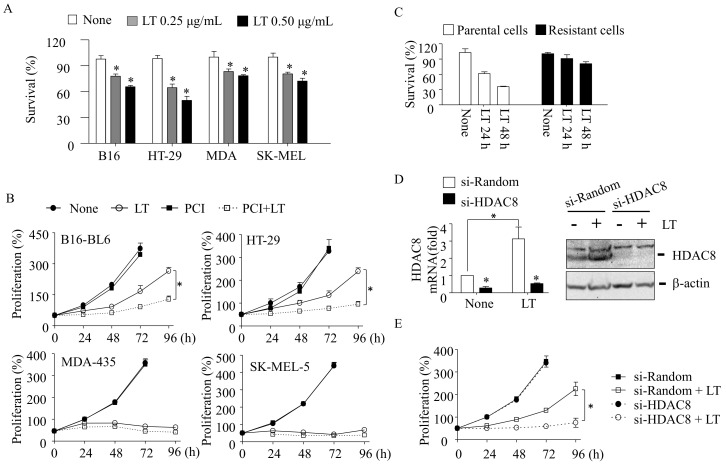Figure 1.
HDAC8 inhibition prevents a resistance to LT-induced cell cycle arrest in B16-BL6 melanoma and HT-29 colorectal cancer cells. (A) Cells were seeded in 96-well plates and treated with two different doses of LT (each PA and LF) for 24 h. (B) B16-BL6, HT-29, MDA-MB-435, and SK-MEL-5 cells were cultured with LT (500 ng/mL of each PA and LF) in the presence or absence of PCI-34051 (PCI: 1 µM) for the time indicated. (C) Resistance HT-29 cells were selected after treating LT for 72 h, and the surviving cells were replated and re-exposed to LT (500 ng/mL of each PA and LF) for the time indicated. (A–C) Cell survival and proliferation were measured by the MTT assay. (D,E) HT-29 cells were transfected with random or HDAC8-specific siRNAs (64 nM) for 18 h. Cells were then cultured in the presence or absence of LT (500 ng/mL of each PA and LF) for 48 h (D) or for the time indicated (E). HDAC8 mRNA and the protein levels were measured by RT-qPCR ((D), left panel) and Western blotting using anti-HDAC8 and anti-β-actin (for the loading control) ((D), right panel). Cell proliferation was measured by the MTT assay (E). (A–E) Data are expressed as means and ± SD (n ≥ 3; *, p < 0.05 by the Student’s t-test).

